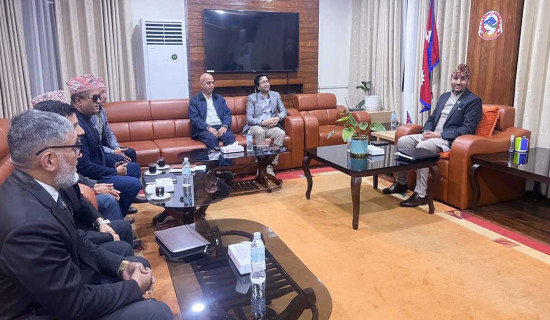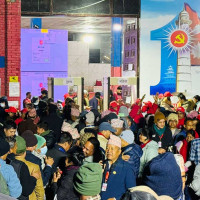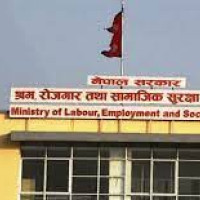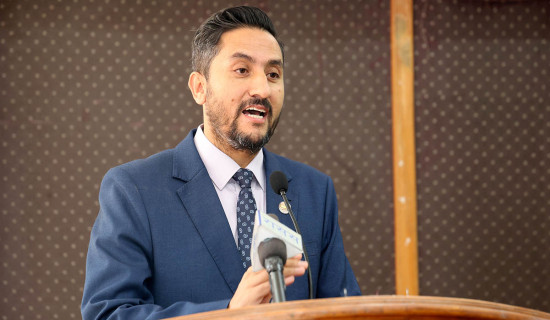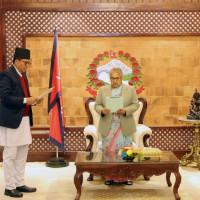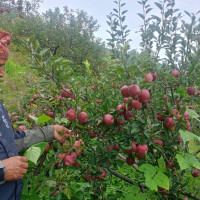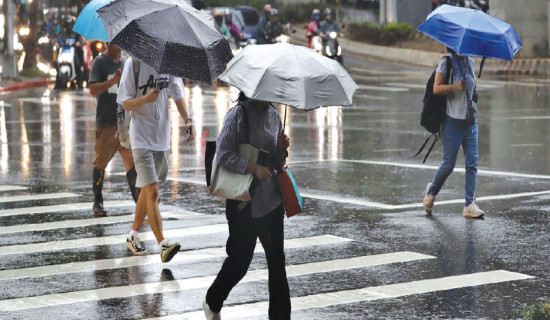- Wednesday, 17 December 2025
Melamchi's alternative being explored to supply water for rainy season
Kathmandu, Apr. 18: Balaram Mayalu of Tinkune, Kathmandu-32, was worried when water from the Melamchi Water Supply Project failed to reach his home on Wednesday, even after he had waited for four days.
He said that since the end of the monsoon, he had been receiving regular water from Melamchi and no longer needed to buy water from tankers. Because his house is located in a narrow alley, getting tanker water is difficult. He fears he may be forced to rely on tankers again.
“I usually get Melamchi water once every four days. It was supposed to arrive at 1 pm on Wednesday, but I waited until evening and still did not receive any,” he said. “I have enough storage for a week for the seven to eight people in my household, but if the water does not come next time either, I will have to call a tanker.”
“I have an underground tank with a capacity of 6,000 litres, so it is easier for me to store water. But some of my neighbours do not have proper storage and it will be difficult for them to rely on tankers,” he said.
He added that during the rainy season, he also collects rainwater for external use. “The halt in supply has already begun, what will happen during the monsoon? That is a real concern,” he said.
Amid this concern over the potential suspension of Melamchi drinking water during the rainy season, the Melamchi Water Supply Development Board is working on an alternative source to ensure water supply to Valley residents.
The government is planning to bring the water from Riberma Khola, just 180 to 200 metres upward from the destroyed Melamchi headworks, said Jagarnath Das, Deputy Executive Director of the Board. “We are planning to bring at least 4 to 5 million litres of water daily from the Riberma Khola by constructing an alternative tunnel, which will connect to the main Melamchi tunnel. However, we may face challenges in linking the alternative tunnel to the main one,” said Das.
Following the debris flow in June 2021 that destroyed the Melamchi headworks, there are now plans to construct a new headworks 500 to 600 metres upstream from the current site.
“For this, a budget of US$ 240 million has been finalised under the Kathmandu Valley Water Supply Improvement Project (Phase 2). The Asian Development Bank (ADB) has approved a US$ 170 million loan, along with an additional US$ 15 million grant.
Another US$ 3 million will come from the Japan Fund for Poverty Reduction (JFPR) and the Government of Nepal will contribute US$ 52 million,” Das said.
“The consultant selection process for the construction of the headworks, along with tunnels
for the Yangri and Larke rivers, has begun. An Expression of Interest has already been sent
to the ADB,” he said. Das added that the survey design is expected to complete by the end of this fiscal year.
The selected contractor will be responsible for constructing a new treatment plant in Sundarijal with a capacity of 255 million litres per day. The same contractor will also build the tunnels for
Yangri and Larke, as well as the headworks. According to Das, the project is to be completed within five years.
Like in previous years, the water supply from the Melamchi River will be halted following the Department of Hydrology and Meteorology’s warning of heavy rainfall and potential flooding in the area. “It will not be possible to supply water from Melamchi
during the monsoon, but we are doing our best to ensure at least some water is provided through the alternative source.
Construction has already begun,” he said.
“For this construction, we do not need significant funding, as the Project Implementation Directorate will provide the pipes and the government will provide around Rs. 1 million,” he said.



